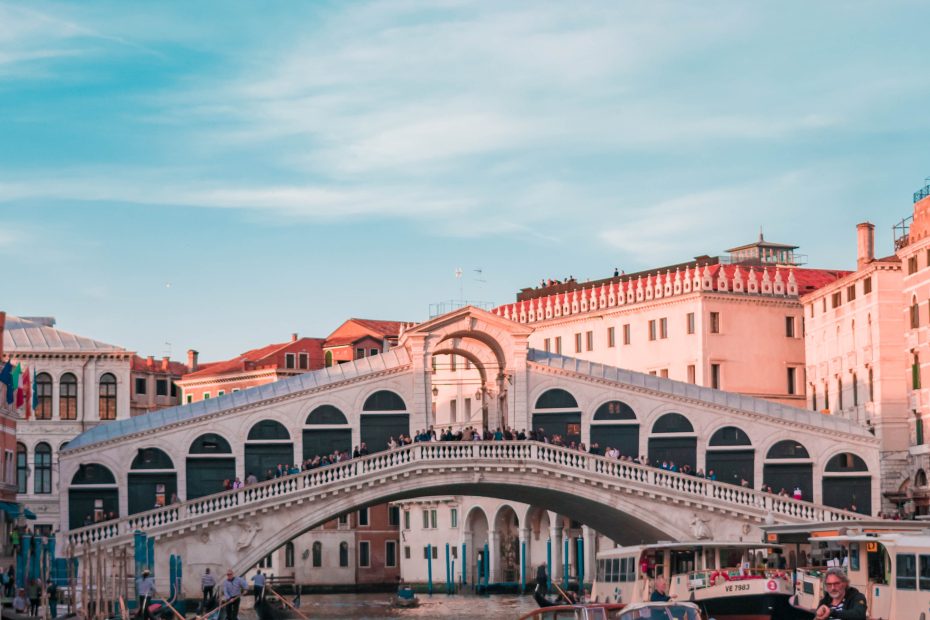Table of Contents
Introduction
From the Mediterranean-influenced cuisine of the south to the Alpine dishes of the north, Italy is a food-lover’s paradise. Italian culinary traditions stretch back centuries, shaped by unique local ingredients and diverse regional styles. Eating your way through Italy offers an immersive opportunity to savor the country’s storied food culture.
Regional Cuisines
Italy’s regional cuisines each have their own flair and specialties worth sampling.
Northern Italy
In northern Italian regions like Piedmont, Lombardy, and Emilia-Romagna, expect rich dishes made with butter, cream, polenta, rice, and stuffed pastas. Iconic northern dishes include risotto alla Milanese, ossobuco, and stuffed ravioli.
Central Italy
Central Italian cuisine relies on flavorful olive oil, tomatoes, and herbs. Tuscany is known for its simple, seasonal fare like ribollita soup and panzanella salad. Umbria and Lazio produce excellent olive oils and pecorino sheep’s milk cheeses. And in Rome, highlights include cacio e pepe, bucatini all’amatriciana, and Roman-stylepizza.
Southern Italy
Southern coastal regions like Campania, Basilicata, and Sicily have cuisines imbued with Mediterranean and North African influences. Dishes showcase seafood, tomatoes, olive oil, and Medicinal herbs. Specialties include Neapolitan pizza, spaghetti with sea urchins, and pistachio-studded pastries.
Signature Ingredients
Certain ingredients form the backbone of Italian cooking across regions. They impart signature flavors and richness.
-
Olive oil: Italian olive oils range from floral Tuscan varieties to grassy Ligurian oils. Quality extra virgin olive oil is essential for dressings, sautéing, and drizzling.
-
Tomatoes: Sun-ripened tomatoes add sweetness and acidity to iconic sauces and salads. Tomatoes are enjoyed roasted, sun-dried, or crushed into passata sauce.
-
Cheese: Italy produces many artisanal cheeses like mozzarella, ricotta, grana padano, and gorgonzola. Soft fresh cheeses and hard aged varieties each find their place.
-
Pasta: Fresh egg pastas and dried varieties like penne, farfalle, and rigatoni are served with tasty sauces or in soups. Regional shapes reflect local identity.
-
Seafood: Coastal Italian cuisine integrates fresh seafood like swordfish, anchovies, clams, shrimp, and tuna. Calamari and octopus are common antipasti.
-
Herbs and spices: Basil, oregano, rosemary, parsley, and garlic season dishes across Italy. Spices like nutmeg and red pepper flakes add subtle heat.
Popular Dishes
Italy’s iconic dishes utilize signature ingredients in creative, crave-worthy combinations.
Pizza
Neapolitan and Roman-style pizzas with chewy crusts, zesty tomatoes, and melted mozzarella are culinary icons. Toppings range from meatballs to anchovies.
Pasta Dishes
Each region boasts classic pasta pairings, including:
-
Carbonara (pecorino, guanciale, eggs, and black pepper)
-
Bolognese (hearty meat sauce)
-
Pesto (fresh basil, pine nuts, garlic, and olive oil)
Risottos
Creamy, toothsome risottos highlight Italian rice varieties like arborio, carnaroli, and vialone nano. Popular versions feature seafood, mushrooms, or savory cheeses.
Gelato
Italy’s artisanal gelatos use milk, not cream, for intense yet lighter flavors. Flavors like hazelnut, pistachio, and zabaglione satisfy without weighing you down.
Wine Pairings
Italy has a wine for every palate and price point. Pairing food with local wines enhances flavor.
Northern Wines
Northern Italy produces full-bodied reds like Barolo, Barbaresco, and “Super Tuscans” along with crisp whites like Pinot Grigio. Try these wines with hearty meat or mushroom dishes.
Central Wines
Central Italy’s food-friendly wines include fruity Chianti, subtle Montepulciano d’Abruzzo, and floral Verdicchio. Pair them with tomato-based pastas and herb-infused dishes.
Southern Wines
Southern Italy produces robust reds like Primitivo and Nero d’Avola. Fresh whites like Falanghina and Grillo complement seafood.
Where to Eat
Certain eateries let you immerse yourself in authentic Italian food culture.
Trattorias
Family-run trattorias serve homestyle local cuisine at reasonable prices. Expect a casual atmosphere and regional classics.
Osterias
At an osteria, hosts treat you like guests in their home. Menus focus on daily changing specials made with seasonal ingredients.
Restaurants
Upscale Italian restaurants offer elevated versions of traditional dishes in refined settings, perfect for celebratory meals.
Cooking Classes
Immerse yourself in Italy’s culinary traditions through immersive cooking classes.
Hands-On Classes
Many Italian cooking schools offer small hands-on classes focusing on local specialties. You’ll gain first-hand experience prepping regional recipes.
Local Market Tours
Some schools include tours of village markets to learn about local, seasonal ingredients. Understanding the produce makes you a better Italian cook.
Bringing Italy Home
After an Italian culinary adventure, bring flavors of Italy back to your own kitchen.
-
Cookbooks: Find authentic cookbooks and memiors like Lidia Bastianich’s. Recreate new recipes at home.
-
Ingredients: Bring home Italian olive oils, vinegars, pastas, and canned tomatoes to stock your pantry.
-
Kitchen tools: Quality Italian pots, pans, and utensils last a lifetime. Invest in the basics.
Conclusion
From hearty ragu to velvety tiramisu, Italy seduces food-lovers with an endless feast of flavors and experiences. Sampling Italy’s diverse regional cuisines, signature ingredients, and iconic wines allows you to immerse yourself in a centuries-old food culture that continues to delight and inspire. Buon appetito!
FAQs
What are some signature Italian cheeses?
Popular Italian cheeses include mozzarella, ricotta, parmesan, pecorino Romano, gorgonzola, provolone, and burrata. Many regions produce their own distinctive artisanal varieties.
What makes Italian gelato different from ice cream?
While ice cream has more fat and eggs, Italian gelato uses more milk and less fat, creating a denser but more intensely flavored dessert. It’s also churned slower, allowing less air in.
What are the differences between northern and southern Italian cuisine?
Northern Italian cuisine relies more on butter, cream, rice, and polenta while southern Italian food uses more olive oil, tomatoes, peppers, eggplants, and seafood. Spices play a bigger role in the south.
What are some quintessential Sicilian dishes and specialties?
Sicilian cuisine shows Arab and North African influences in dishes like caponata, arancini, cous cous con zucchine, and cassata cake. Its seafood, like swordfish, sardines, and tuna, is excellent.
What are the most common herbs used in Italian cooking?
Italians liberally use basil, oregano, rosemary, parsley, thyme, bay leaves, and mint. Garlic features in many savory dishes. Other spices include fennel, nutmeg, and red pepper flakes.
